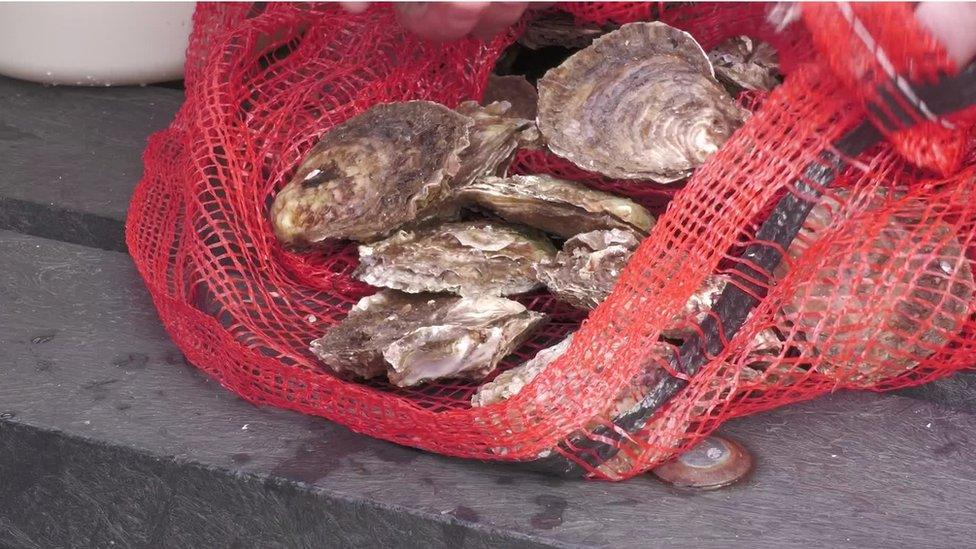Plan to bring native oyster back to NI waters takes step forward
- Published

A project to bring the native oyster back to the waters around Northern Ireland has taken another step forward.
Ulster Wildlife has been working on a second nursery for the molluscs.
More than 800 oysters were brought over from Scotland and have been settling into Glenarm Marina for almost two months.
Volunteers from Ulster Wildlife painstakingly scrubbed and checked each of the shellfish to ensure biosecurity was protected.
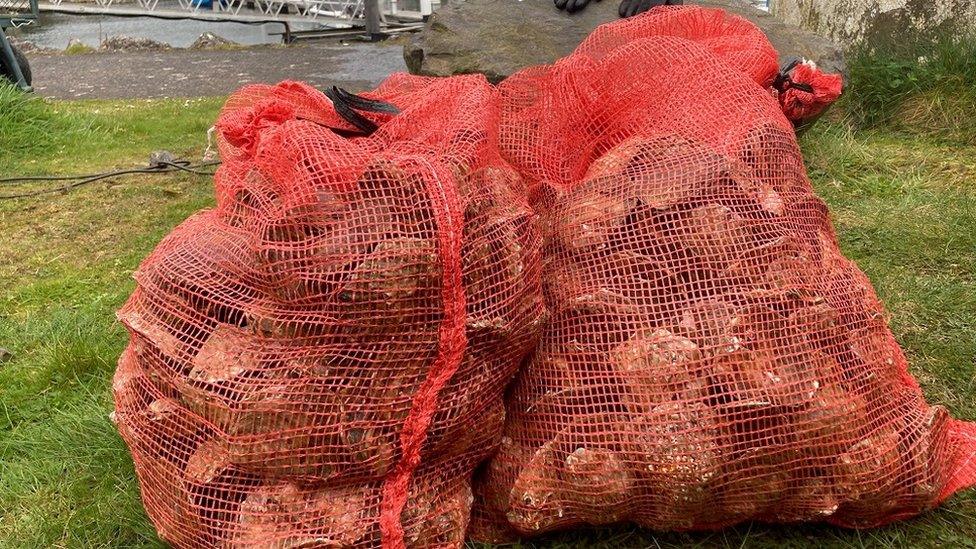
Some 800 oysters were brought to Glenarma Marina from Scotland
The oysters were then placed in 30 cages which have been lowered into the water off the jetties.
They will spawn and release up to 800m larvae every year to form reefs in Glenarm Bay.
And they can change sex to ensure there is always the correct ratio of males to females to support reproduction.
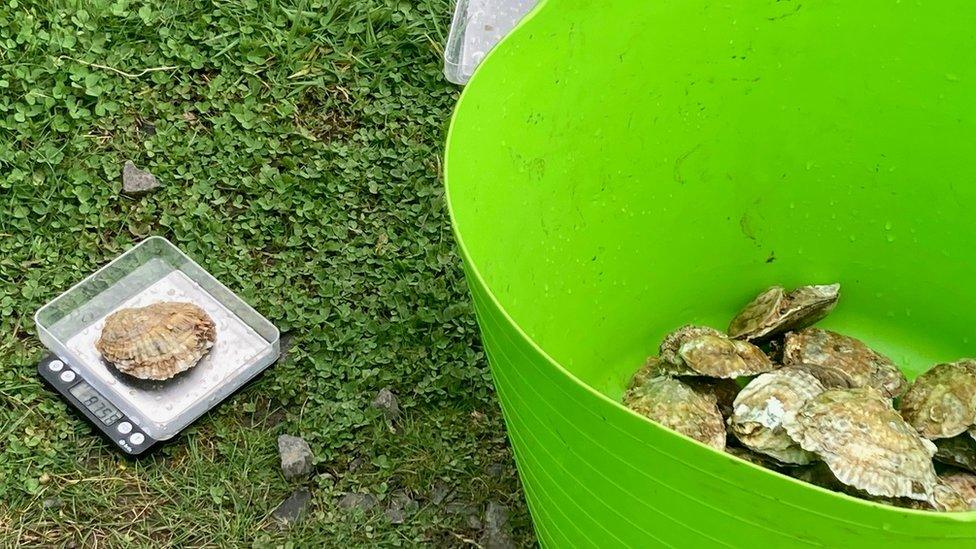
Native oysters are one of the most imperilled habitats on Earth
But restoring the oyster population is only half the story, according to Ulster Wildlife senior conservation officer Dave Smyth.
"It's really the habitat we're after," he said.
"Saving the oyster is part of creating the habitat. So for example, one oyster on its own can accommodate over 100 species on its shell. So if you have a reef of oysters, you can imagine the sort of life that that'll attract."
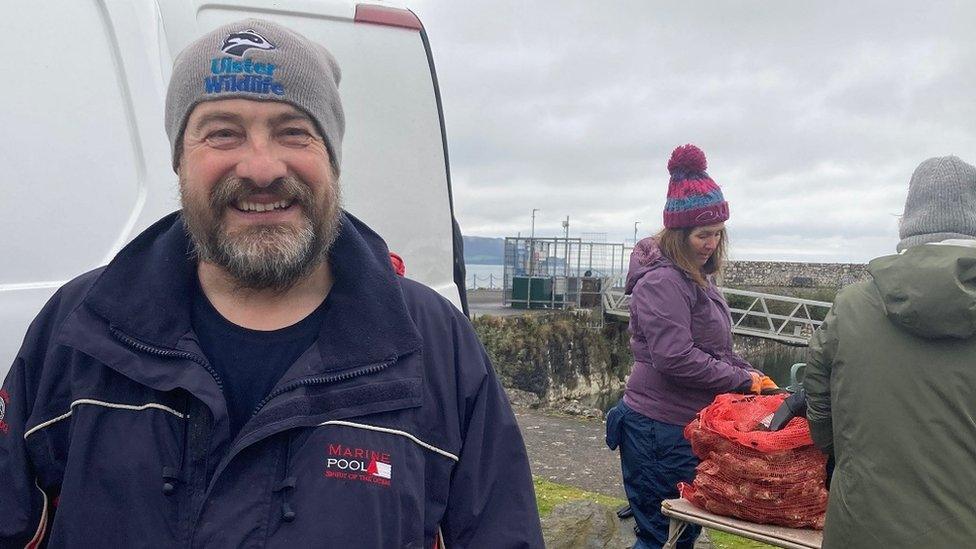
Dave Smyth said they want to save the habitat as much as the oysters
Mid and East Antrim Council manages the marina where the nursery has been installed and its mayor, Alderman Noel Williams of the Alliance Party, welcomed the project.
"We are thrilled to be playing our part in restoring this endangered native species.
"Nestled at the bottom of the Glens of Antrim, Glenarm Marina is the perfect spot to help revive native oysters.
"As well as increasing water clarity and quality, the project will also deliver enhanced biodiversity and provide rich cultural value to the area," he added.
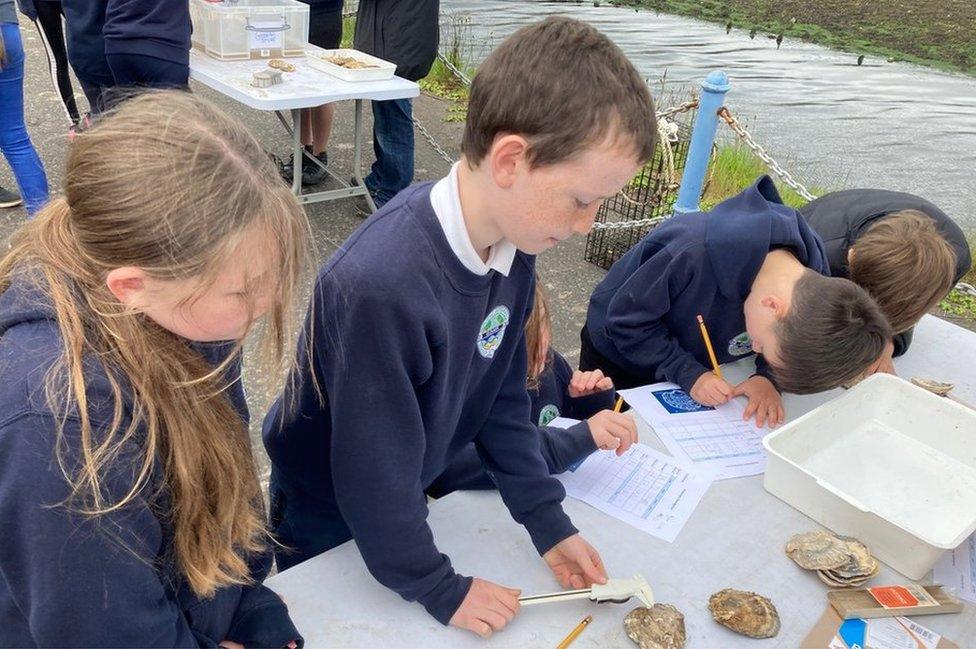
Children from Seaview Integrated Primary School in Glenarm helped measure the oysters
Native oysters are one of the most imperilled habitats on Earth. It is estimated that reefs have declined by 95% since the 19th century.
With each oyster potentially filtering as much as eight litres of water an hour, they also improve water quality and are something of an environmental odd-jobs worker.
"They have a lot of other additional ecosystem services whereby they can change or fix things within the environment," said Dave Smyth.
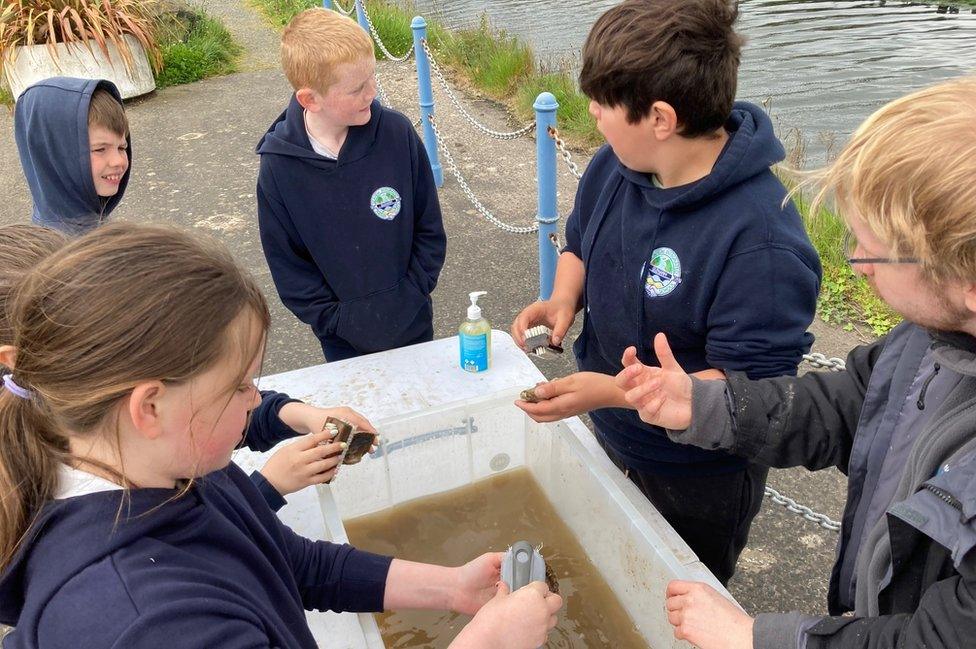
The children helped clean the oysters
"One example is, they can actually filter microplastics out over their gills. They'll expel those wrapped in a mucus ball which will end up locked up into the sediment of the seabed.
"This is a win-win for nature, restoring oysters creates healthier and more resilient seas and their reefs store carbon - crucial if we are to tackle the nature and climate crisis," he added.
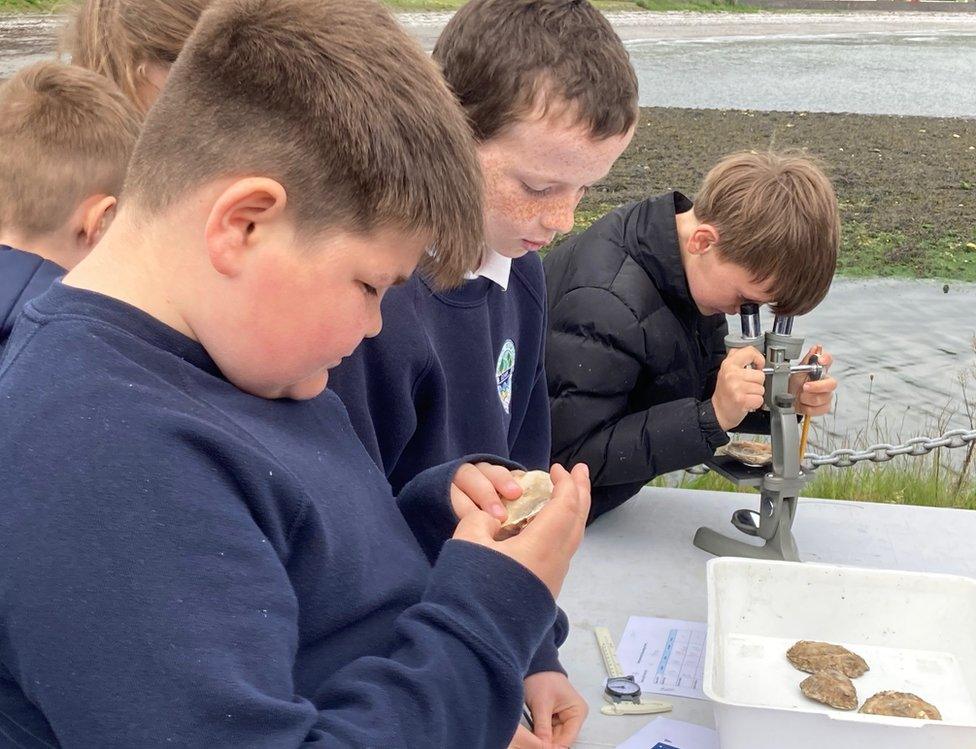
The children examined the oysters using a microscope
Related topics
- Published20 May 2022
